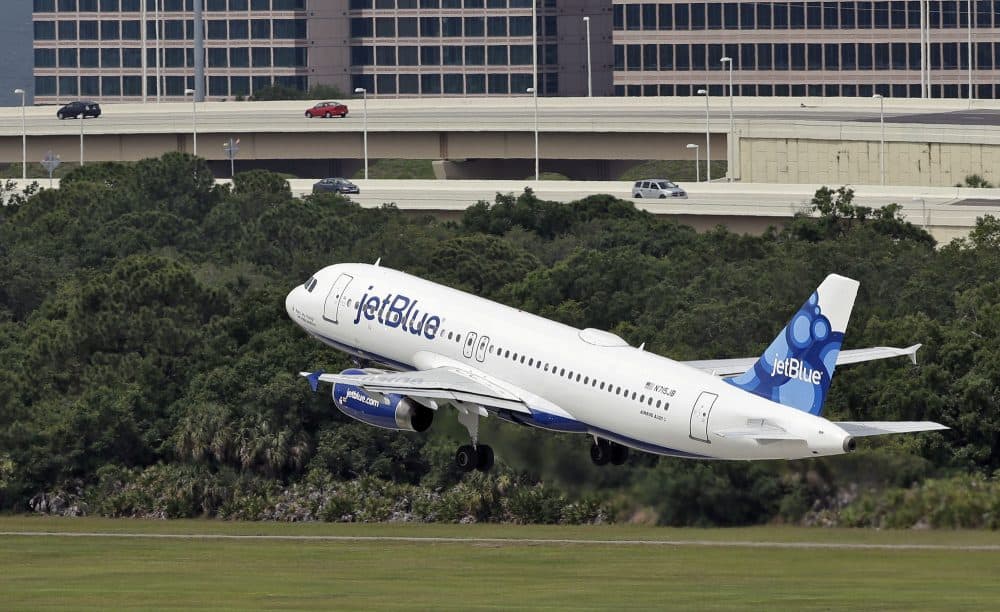Advertisement
Lesson From JetBlue's Bumpy Flight: Wear Your Seat Belt
Resume
A JetBlue Airways flight from Boston to Sacramento hit severe turbulence last night. Twenty-four people were injured and sent to the hospital after the flight made an emergency landing in Rapid City, South Dakota.
How worried should fliers be about turbulence? Here & Now’s Jeremy Hobson talks with former American Airlines pilot Mark Weiss.
Interview Highlights: Mark Weiss
On ways to mitigate turbulence
"Typically when you get a flight plan, it may indicate on the flight plan if there are any known areas of turbulence. You certainly try to minimize that, or avoid that by either changing a flight path or an altitude. Certainly the other way you get that is through, when you're flying, is through the air traffic control will notify you if there is any known turbulence in the area. And also you'll be notified typically by other aircraft in the vicinity that they're experiencing a certain level of turbulence or certainly if you don't hear anything you wouldn't expect it. This seems like it may have come out of the blue, so to speak, no pun intended."
On how the flight handled a known weather front
"Weather fronts occur constantly, you're always going back and forth through them. Certainly no pilot is going to be flight planned through, or knowingly go through, an area of severe turbulence — you're not allowed to do that. And in that case, yes, they would have been rerouted or different altitude or different path taken. But that didn't seem to be the case in this situation."
On the importance of wearing a seat belt
"Typically, you know, when you fly you'll hear that the pilot will say, 'We recommend that you keep your seat belt fastened at all times,’ and there's a reason for that, because you get a phenomena like this. You may come across a jet stream, which isn't very big or very wide or thick. But you may run into that and find yourself in severe turbulence very quickly. So when somebody says to you, 'Keep your seat belt fastened,' there's a reason for it. I'm pretty sure that the majority of people who have been injured in turbulence accidents on board commercial airliners were people who were not belted in at the time that they were injured."
On how far a plane can fall during severe turbulence
"It really depends. We've had aircraft fall a few thousand feet, sometimes it's just very, very choppy. Severe turbulence, there are definitions from the FAA on what constitutes severe turbulence, chop, there's various definitions. But it's when you lose control of the aircraft, even for a few moments. But remember that air is a fluid, and when you go through that you're going to be going through different layers, so you know, to be able to get out of this — changing altitudes, changing course — really will minimize the level of time that you're in this."
Guest
Mark Weiss, former American Airlines pilot and CEO of Weiss Consulting.
This article was originally published on August 12, 2016.
This segment aired on August 12, 2016.